In the last few years, I have reviewed more lenses than you could possibly imagine.
My photography students are always asking which lens is right for them, so I spend a significant amount of time looking for lenses that offer superior quality at lower price points.
These are the best inexpensive Canon lenses I could find.
There are many others that I'm sure people will mention in the comments, but only 6 could make the cut for this list.
These lenses are the ones that I recommend very often on the Improve Photography Lens Finder.
I spent thousands of dollars and over a year developing the lens finder.
It basically asks you 5 questions about what lens you want, and then recommends the perfect lens for your situation.
I must mention from the outset that I use “the triad” of lenses (explained later), so I'm comparing the lenses in this list against the highest quality lenses in the Canon system at any price.
In all instances I have found these lenses to perform extremely well with Canon L lenses, but for WAY less money.
This is the good stuff–even when compared to the highest quality lenses money can buy.
Also, I must issue a disclaimer that the word “inexpensive” means different things to different people.
I am using the word “inexpensive” to compare these lenses to the top performing Canon L lenses that are generally priced around $2,000.
Tamron 28-75mm f/2.8 Lens
About a year ago, I had the opportunity to spend some time with a rep from Tamron and spend the day shooting just about all of the lenses in the Tamron lineup.
To be honest, I was not thrilled with most of them.
Most were “acceptable” and one lens was jokingly awful.
I finally couldn't take it anymore and I asked the rep to show me just the one best lens in the Tamron lineup.
He reached for the Tamron 28-75mm f/2.8. Skeptically, I played with it and shot with it for a while.
I was blown away at the quality from this lens.
I found this lens to be extremely close to the sharpness of the $2,400 Canon 24-70mm, and it adds one really impressive feature that the Canon doesn't–it's also a nice macro lens.
For me as a professional photographer, I would definitely take a long hard look at the Tamron 28-75mm before shelling out MORE THAN FOUR TIMES the cost to buy the Canon 24-70.
You can check the current price of this lens on Amazon.
You can also check KEH Camera to see if you can save some money on a REALLY high quality used one.
KEH Camera also has REALLY good financing option!
Canon 70-200mm f/4
Before you get lost in your excitement over the price of this Canon lens, notice that the f/stop only goes down to f/4 instead of the much-desired f/2.8 version of this lens (which costs about $2,500 dollars!).
To have an f/4 maximum aperture is not entirely negative; in fact, it gives you a lighter lens than the f/2.8 version with nearly equal optical quality.
The fast aperture will give you great results all the way through the lens to the edge of the photo.
In fact, many professional photographers who have used the 70-200mm f/2.8 for years are now switching over to this f/4 version to save some money and to lighten their load.
If you haven't used professional lenses before, you may not appreciate just how heavy they are, so saving weight by choosing this f/4 lens is a significant benefit over the $2,500 f/2.8 version of this lens.
This is probably the most popular lens for photographers buying their first professional-grade “L” lens (Canon's marker for their professional quality lenses).
There are two 70-200mm f/4 lenses available for the Canon system. Both are “L” glass, but one has image stabilization and one doesn't.
The image stabilized version is significantly more expensive, but the optical quality is similar between the two versions.
Click here to check the price of the less expensive non-IS version on Amazon, or else you can click here for the much more expensive version with IS on Amazon
You can also check KEH Camera to see if you can save some money on a REALLY high quality used one:
Canon 85mm f/1.8 – $335
If I could pick only one prime lens for portrait photography, it would be the 85mm.
There is also an 85mm f/1.2 lens available for the Canon system, but this lens is nearly as good for much less money.
The 85mm focal range allows you to maintain a bit more distance between you and your client.
Also, the bokeh in your backgrounds just look silky smooth.
You will be amazed at the sustained image quality all the way to the edge of your photos, even with finer detail.
When shooting portraits with this 85mm lens, full-frame shooters will see a slight softness around the edges… but nothing you can’t live with.
Check the price of this lens on Amazon.
You can also check KEH Camera to see if you can save some money on a REALLY high quality used one.
Canon 100mm f/2
The Canon 100mm f/2 is the twin sister of the 85mm f/1.8 lens mentioned previously, but this one was born 15mm later.
In terms of build quality, value, and sharpness, these lenses are both about equal.
So now the question–which one do I pick?!?!? My rule is this: if you EVER shoot indoor sports, you want the 100mm f/2.
It's just about as fast and sometimes the extra 15mm can make a real difference for indoor sports.
This is a great option for indoor sports because it is ridiculously fast and is a good focal length for “close” sports where you can get right up to the sidelines like swimming, wrestling, tennis, some basketball games, etc.
Aside from indoor sports, this lens is fantastic for portraits as well. If you are shooting exclusively portraits, it is difficult to choose between the 85 and the 100.
The features on the face become flatter and more flatterING when shooting with a longer focal length, but photos shot with a slightly shorter focal length have a more intimate feel.
In general, I'd recommend the 100mm for full frame cameras (5D Mark III or 6D, for example) and the 85mm f/1.8 for crop sensor portraits (like the Canon Rebels, 70d, etc.)
Check current prices for the Canon 100mm f/2 on Amazon.
You can also check KEH Camera to see if you can save some money on a REALLY high quality used one.
Canon 100mm f/2.8 MACRO Lens
Things just got complicated. You decided between the 85mm f/1.8 and the 100mm f/2, but now there is a third option with a similar fast aperture and similar focal length.
This one, however, adds macro capabilities which means it can focus very close to the camera.
But this lens is not only for macro photography.
Given it's sharpness, fast aperture, and convenient focal length, it also makes a nice portrait lens.
This lens is the little brother of the Canon 100mm f/2.8 L lens, which is slightly sharper and has better build quality.
But just because there is a more expensive version of this lens does not take away from the value of this excellent and sharp portrait and macro lens.
If you want to do serious macro photography on a budget, then this lens is an excellent option.
If however, you really want to do serious portrait photography and it would just be handy to do macro as well, I'd advise you to pick the 100mm f/2 (mentioned above) and simply buy this close focus filter on Amazon to add on the lens when you want to occasionally do macro work.
Check the current price of the Canon 100mm macro on Amazon.
You can also check KEH Camera to see if you can save some money on a REALLY high quality used one.
Canon 50mm f/1.8 II
Every photographer should own a 50mm f/1.8 lens as your first upgrade from the kit lens that came with your camera.
This lens is significantly sharper than the kit lens, has an extremely fast aperture for blurry backgrounds and shooting in low light, and the price is unbelievably good.
This little guy will just simply astound you at the great quality and stunning images you will get.
At the low price, it’s nearly a no-brainer to add this lens to your lineup.
This lens maintains great quality all the way to the edge at lower f/stop values.
This is a prime lens, so you will have to physically move to zoom in and out and potentially get in your client’s face.
I used the “nifty fifty” (as photographers often call this lens) for several years before investing in uber-expensive pro lenses.
Looking back, this lens is only a tiny bit less sharp than pro lenses, but for me the real benefit of the more expensive lenses is the zoom.
Many photographers love shooting prime lenses such as this, but most of the time I prefer a zoom.
Check the current price of the Canon 50mm f/1.8 on Amazon.
You can also check KEH Camera to see if you can save some money on a REALLY high quality used one.
Two more lenses that ALMOST made the list
There are two more lenses that I was extremely tempted to put on this list but resisted because they are a bit too expensive to be called “inexpensive” even though they are much less than other lenses of similar quality.
They are the Canon 24-105mm f/4 lens and the Canon 200mm f/2.8L.
The Canon 24-105 is probably the best “walk around” lens in the Canon lens lineup.
It is used by many professional photographers as a street photography and “chase the kids” lens.
It has a reasonably fast aperture, a convenient focal length, and is sharp as a tack.
I just wish it came down in price a couple hundred bucks.
The Canon 200mm f/2.8 L is a marvel of engineering.
For the price, you get a sharp, fast prime lens that would be terrific for shooting indoor sports, longer portraits on a full frame camera, etc.
Highly recommended though if I were spending that much I'd have to figure out how to justify purchasing the 200mm f/2.8 instead of the 70-200mm f/4 for even less money.
One side note…
Just about every professional photographer I know owns the same three Canon lenses: The 16-35mm f/2.8, Canon 24-70mm f/2.8, and the Canon 70-200mm f/2.8.
Photographers often refer to these lenses as “The triad,” and the same lens names make up the Nikon triad.
I certainly wouldn't agree that you need these three Canon lenses to be a professional photographer.
But I do want to bring out the point that professionals rely on this triad because they are all nearly flawless, fast lenses that cover the entire range of focal length that most photographers need for general photography work.
I want to re-iterate that I do not think the triad of lenses is necessary for photographers to own in order to produce top notch photography.
That's the whole point of this article!
But if you plan to shoot your camera system for many years and you are in a position to invest heavily on lenses, one advantage to these lenses is they generally last a decade or longer with excellent results.
I know many photographers who purchased a 70-200mm seven years ago and who don't feel the need to upgrade to the newer versions because their original is still so good.
Quite frankly, the difference between most of the lenses on this list and the more expensive competitors to these lenses is extremely minor.
I wouldn't put too much stock in what the camera manufacturers want you to think you need to take a nice sharp photo.
Disclaimer: Improve Photography is a participant in the Amazon Services LLC Associates Program among other affiliate programs, an affiliate advertising program designed to provide a means for sites to earn advertising fees by advertising and linking to Amazon.com and other websites.

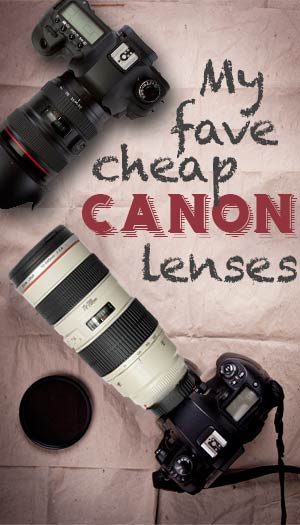





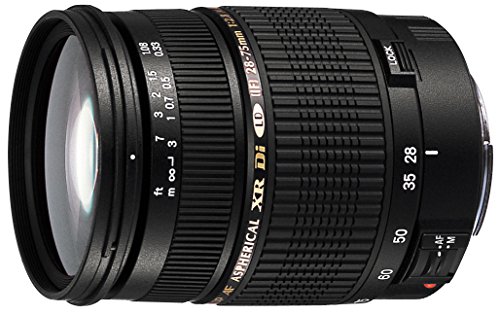
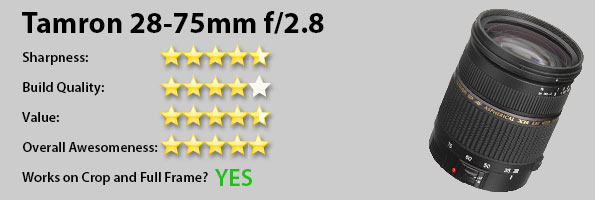
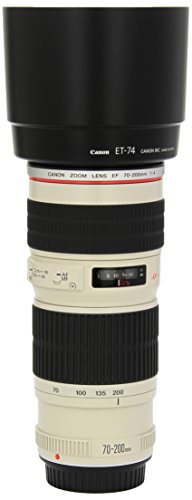
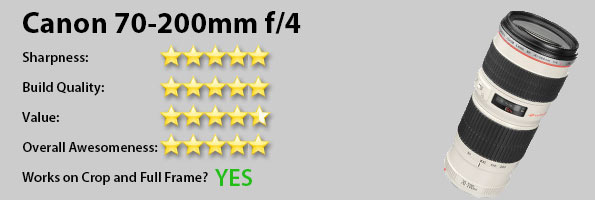

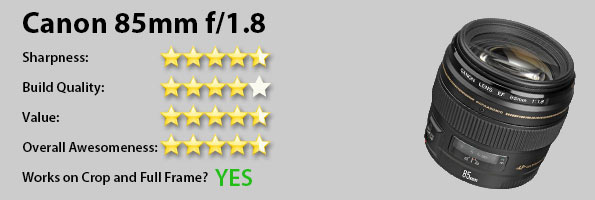

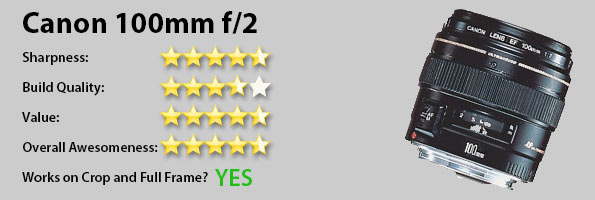

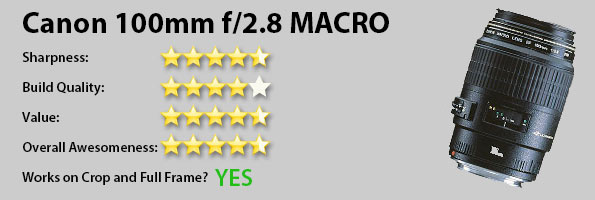


I’m so glad to see I chose wisely! Granted I did do my homework before I bought each of my five lenses but it’s good to see they are still holding up nicely in the competition after the seven years I’ve been using them.
I would say if you only have the money for one of these lenses and you do a lot of outdoor nature photography grab that 70-200mm and run with it. It’s got THE most beautiful quality of any of my lenses and I consistently love the results it produces. It is a bokeh-seeker’s dream lens!
Do you have any alternative to the Canon 16-35/2.8 (full frame camera)?
Canon EF-S 10-22mm f/3.5-4.5 USM
CWT, I have the Canon 10-22. It’s a pretty decent lens, only I find it has extreme vignetting & picture bending from about 10-13mm, mostly detectable if photographing people (i.e. , they look wider/20 lbs heavier, lol). However this can be corrected using photoshop.
The Canon 17-40 f4L is a great lens and way cheaper than the 16-35. Obviously not as fast, but unless you are shooting really dim stuff indoors, at these focal lengths it’s not that much of an issue. It’s very sharp and has all the usual “L” attributes. One of my favourite lenses.
Very good point – I own it and I love it! It’s basically the same focal length on my 5DIII as my 10-22 is on my 7Dll. I purchased it because I had such good luck with the 10-22!
I use a 17-40 f/4 on a 6D for shooting local music shows. It is a stellar lens for what I paid for it. I can get outstanding results even at 1/125.
TheCanon 16-35 f4L is a fantastic lens. Lighter than the 2.8, with IS (good for three stops, give-or-take) and with better glass (sharp as a razor @ f4 and with hardly any flare or ghosting) for considerably less money. And it is flat on the front. So much less hassle.
Hey Dave –
I think I already posted a blog on this, but let me update. Check out the Canon EF 17-40 f/4L USM lens. It is an amazing lens and new, sells at B&H Photo for $749.00 On eBay, you can find them between $250-$700. I think I paid about $450 for mine in pristine condition. The Canon EF-S 10-22 f/3.5-4.5 is for crop sensor cameras (40D-80D series,) as well as the Rebels (T5, T6, etc). That too, is an amazing lens that sells for $599.00 at B&H and $240 – $600 on eBay. I purchased the 17-40 for my 5DMkIII because I was so happy with the focal length of the 10-22 I have for my 7DMkII. You won’t be disappointed!
Agreed. I have the same lens. Love it!
Canon EF 16-35mm f/4L IS USM Zoom Lens.
I have the 17-40mm ƒ4.0 L and can highly recommend it.
Canon 17-40
I’ve got the tamron 28-75 f 2.8 pentax fit, think it’s a good all round lens.
One that should probably be on the list is the 80-200 F2.8 L by canon. its an older lens.. but its sharp.. its fast… and its and L lens.. and I picked mine up for only 500! the downsides are that it doesn’t have IS.. and you cant use extenders on it. Its pretty HSM ultrasonic.. but still a great buy for the price
I have to agree.The rare older canon 80-200 f.8L lens is an absolutely fabulous lens.It’s nickname is “The Magic Drainpipe”.Many Nikon shooters defected to Canon purely because of this legendary lens.This was my first affordable L lens and i still have it.I also have the 70-200 f4 is usm and the 70-200 f2.8 is usm..Although the three of these lenses are the same focal length they all have there place in my arsenal of L series glass…The bokeh with the 80-200 is to die for.It seems much cooler and more pleasing than the more modern zooms.It maybe because the superb old glass contains lead.The newer models do not.If you can pick up a good copy i am certain you will not be disappointed..Tele converters can be used,just not canon.I have a 2x Kenko specifically for my drainpipe…………………..HAPPY SHOOTING……………………
I am a tad confused. The lenses that are listed …….. are they for FULL FRAME 35mm or CROP SENSOR with a factor of 1.6 (CANON EOS 70D)? For instance the 50mm shown is equal to a 80mm when used on crop sensor – is it not?
Thanks. Just trying to be certain of the way these lenses are utilized (Full Frame -vs- APS-C)>
Don / New Mexico
Canon EF lenses can be used on both full frame and crop sensor bodies (6D, 5D series, 1D series, as well as all other Canon DSLR bodies). EF-S lenses can only be used on crop sensor (Rebels, 10D-80D, 7D series). An EF-S lens will not mount on a FF body. As for the crop sensor bodies, there are two distinct markings on the mounting collar. The white square on the lens lines up with the white square on the body. The white squares are only found on EF-S lenses. Only red dots are found on EF lenses. The red dot on the EF lenses align with the red dot on the FF bodies, as well as the red dot on crop sensor bodies. Hope this helps!
Don, all focal length are advertized as they would be on a full frame even though some only work in crop sensor cameras. All the lenses that are EF-S (meaning that only work in crop sensors) are still advertized with the potencial focal lenght that would have if used in a full frame… example… the 55-250 from canon is an EF-S lense.. meaning you can not use it in full frame cameras, so the actual focal lense would be 55 * 1.6 = 88 and 250 * 1,6 = 400, so 88 – 400 BUT… for comparison purposes and because you CAN use full frame lenses in crop sensor cameras.. there have to a s standard… and that one is the full frame. NOTE that the aperture also changes with the crop sensor. I just sar your question is from 2015 and by now you probably have learnt all this… but I already wrote it and may be helpful for other readers 🙂
Thanks for the article. I have managed to destroy three cheap Canon lenses over the years (18-55, 18-200 and recently the 50mm 1.8 — the 18-200 and 50 were accidental drops). I am looking for a reliable, good build piece of glass that is quick and sharp and not too hard on the wallet.
I enjoy landscape photography as well as lightning storms, night shots and family portraits. I think I will add the Tamron 28-75 to my list of potential lens along with:
* Canon EF 17-40mm f/4L USM
* Canon EF-S 17-55mm f/2.8 IS USM
* Sigma 18-35mm f/1.8
* Sigma 17-50mm f/2.8 EX DC OS HSM
I am currently shooting Canon 60D so the wider the lens the better – especially with the crop factor.
You are awesome, I love your practical no nonsense advice. All the things I have bought that you have recommended I have been extremely happy with.
Nice list. When I bought lenses about a year ago I went with the Sigma 24-70 f2.8, a used Canon 70-200 f2.8 IS1 and a Canon 50 f1.4. I didn’t find the 50 f1.4’s price (I think I got it for @$340) to be a deal breaker and I like the more durable feeling construction and weight. I shoot a lot of performing arts (theatre, dance, live bands, etc.) in low light situations so fast lenses are a must. I am waiting to pick up the 16-35 f2.8 and probably the 85 f1.8, but those are down the road a ways.
Great article! Glad I made some good choices! I have the 70-200 f/4; 85 1.8 and the 200 f/2.8-also have the 50 1.4. I have been wanting the Tamron 28-75 for a while now and was wondering about the “macro” part-this would be the push I need to get this lens.
Can owners confirm that the Tamron 28-75 is a Macro-I’m getting conflicting information on this.
@Karen Wolff – There isn’t any specific “requirement” that must be met for a lens manufacturer to call a lens a macro lens. All the term really means is that you can focus close up and magnify things well. How well? That depends on how hard a company wants to market the product 🙂 The 28-75mm is nothing compared to a dedicated macro lens, but for getting close up shots of the wedding rings or larger insects or flowers, it’s perfect.
I have the Canon 24-105mm lens already. Should I get the Tamron as well or is that basically an overkill and the same thing? Thanks
Sir, please guide me as how to buy in India?
you stink
Sir, please guide me as how to buy in India?
I have the Tamron 28-75 2.8 and the macro on it is not that great. Yes, you can take photos sort of closely, but you do not have the compression you need for beautiful creamy bokeh like a ring shot taken by Susan Stripling. You’re not going to catch a bee on a flower either. It’s just not macro-enough for me. But it’s a pretty good lens with a bit of annoying chromatic aberration.
Great list Jim! I’ve owned several of these and recently sold my tamron 28-75 2.8 and canon 70-200 f/4 to upgrade to a 2nd member of the triad (used 24-70 2.8), having made the leap to the 70-200 2.8 a while back. Both myself and the friend I sold them to are happy campers 🙂 I’m totally in love with the 85 1.8 and it’s always in my camera bag – a total hoss of a lens! Because of it and my other lenses my poor little 50 1.8 doesn’t get out much anymore 🙂
Thanks,
Bob Lewis
Binkdog Photography
Another amazingly good Canon lens is the EF 70-300mm f/4-5.6 IS USM. It’s sharp, has good contrast and color and the IS is very effective. It’s not the fastest lens on the planet, though AF is surprisingly quick. At U$650, it’s a darned good deal.
I REALLY liked your post! Very interesting! 🙂 Pretty useful!
BUT I have one question. Being on a cropped APS-C sensor, does all the choices up there still make sense ? In fact, I was more thinking about the Tamron 28-75. Isn’t a bit long compared to the kit lens 18-55 ? The other (nice) choices of lens don’t cover the more “wide angle” on the APS-C.
@Eric Sentere – Good question. In a few relevant spots in the article I did point out where a particular lens would be more suited to an APS-C or full frame sensor but I could have gone more in depth. I wouldn’t really consider the 28-75 a replacement for an 18-55 at all, in fact. They just do different things.
You also noticed that I didn’t recommend a wide angle lens in this list. Frankly, I’m not real happy with the wide angle lenses available for crop sensor Canon cameras. The 10-22 is not nearly as sharp as it should be and the price is unreasonable for what it is. The Tokina 11-16mm is close, but the durability and sharpness suffer.
I have been very happy with my 8-16mm Sigma on my 7D
I have the same Lens on my T2i and find the results to be great. Sharp and easy to use in Auto mode.
Don
Thanks for the list! I’m shopping for a mid-ranged zoom lens. When you said you tried a bunch of Tamron lenses, did it include their highly reviewed 24-70mm f2.8? I’m considering getting that and wondering if the one you recommended was better than this. Or did the 24-70 not come out yet when you tested them?
The Canon 24-105mm f4L is an excellent day-in – day-out workhorse of a lens. I’ve used one for several years and it is remarkably versatile. While not ideal, it is very possible to shoot an entire wedding day start to finish using just that lens, and get excellent results. I would suggest it be considered as a first pro-level lens for photographers entering the profession.
Great article! Glad I made some good choices! I have the 70-200 f/4; 85 1.8 and the 200 f/2.8-also have the 50 1.4. I have been wanting the Tamron 28-75 for a while now and was wondering about the “macro” part-this would be the push I need to
The Canon 24-105mm f4L is an excellent day-in – day-out workhorse of a lens. I’ve used one for several years and it is remarkably versatile. While not ideal, it is very possible to shoot an entire wedding day start to finish using just that lens, and get excellent results. I would suggest it be considered as a first pro-level lens for photographers entering the profession.
Great list Jim! I’ve owned several of these and recently sold my tamron 28-75 2.8 and canon 70-200 f/4 to upgrade to a 2nd member of the triad (used 24-70 2.8), having made the leap to the 70-200 2.8 a while back. Both myself and the friend I sold them to are happy campers 🙂 I’m totally in love with the 85 1.8 and it’s always in my camera bag – a total hoss of a lens! Because of it and my other lenses my poor little 50 1.8 doesn’t get out much anymore 🙂
Thanks,
JAMEEL FAREEDI
Binkdog Photography
Great list! I’d recommend the 40mm/2.8 as an addition to the list. I stopped using my 50/1.8 as the 40 has better colour rendition, is sharper and produces more contrast. It is also more silent, smaller and lighter.
If you don’t need the extra 1 1/3 stop or the extra 10mm the 40mm is a low cost high performance lens.
@Marco – Derrick Story also likes the 40mm pancake. I really trust his advice so I almost put it on the list, but when it comes right down to it…. I just don’t find myself shooting in the 40mm range very often. But it looks like the lens itself is great!
Jim, your realistic eye-on-the-wallet approach to everything and well-researched, experienced opinions are always refreshing. I’m a particular fan of your advocacy for the photographer, rather than the industry’s leading retailers. You had me won over as a favorite of mine from day one. A grateful thank you from a Texas photographer!
Any chance you’re writing one of these for Nikon lenses? I’d be very interested. 🙂 Happy Thanksgiving to you and your family…
Would you recommend the Canon EF 50mm f/1.8, or the Canon EF 85mm f/1.8 USM Medium Telephoto Lens, for a burgeoning photographer on a very tight budget, starting to get clients calls for portraits? Body is a Canon Rebel Xsi. Or should I hold out for the Tamron AF 90mm f/2.8 I’ve had my eyes on?
Hi Claie,
Since your Rebel is a cropped sensor camera, go for the Canon EF 50mm/1.8 II. The EF85mm f/1.8 would be a tad too long for regular portrait photography. The 50mm lens on a croppped sensor translates to 80mm on full frame. For the same reason. avoid the Tamron AF 90 f/2.8.
If I’m working off of the kit lens (Canon EF-S18-55 f/3.5 & Canon EF-S 55-200 f/4) what would you recommend to start with to move toward the triad? I shoot mostly portraits of children and families.